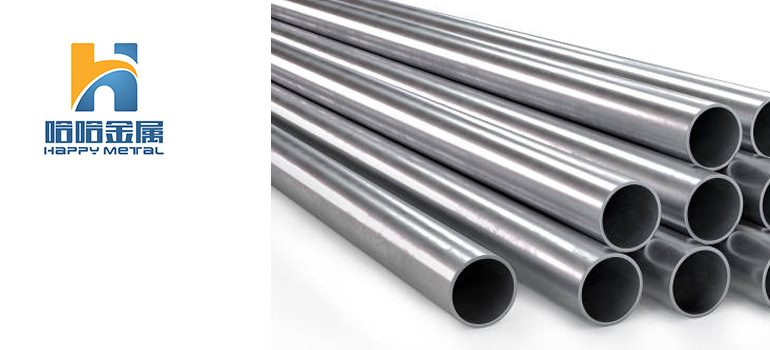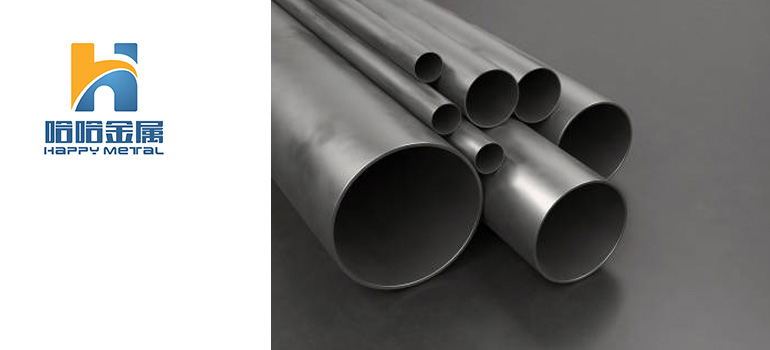Summary:
The Ultimate Guide to Schedule 40 Carbon Steel Pipe: Everything You Need to Know
What is Schedule 40 Carbon Steel Pipe
Importance and Applications of Schedule 40 Carbon Steel Pipe
Dimensions and Sizes of Schedule 40 Carbon Steel Pipe
Selecting the Right Schedule 40 Carbon Steel Pipe
Carbon steel pipes are a vital component in various industries, renowned for their durability, strength, and versatility. Among the different types of carbon steel pipes, Schedule 40 stands out as a popular choice due to its balance of affordability and performance. Let’s delve into the essence of Schedule 40 carbon steel pipe, exploring its characteristics, applications, and significance in diverse fields.
What is Schedule 40 Carbon Steel Pipe?

Schedule 40 carbon steel pipe is a type of steel pipe that adheres to specific dimensions and pressure ratings defined by industry standards. This designation, “Schedule 40,” refers to the pipe’s wall thickness and pressure rating, with the number indicating the thickness of the pipe wall.
In essence, Schedule 40 carbon steel pipe signifies a standardized wall thickness that provides adequate strength and durability for a wide range of applications. It strikes a balance between being robust enough to withstand high pressures and temperatures while remaining cost-effective and versatile.
This type of pipe finds extensive use in various industries, including construction, plumbing, manufacturing, and infrastructure projects. Its versatility makes it suitable for transporting fluids, gases, and solids in both residential and industrial settings.
One of the key advantages of Schedule 40 carbon steel pipe is its reliability and consistency. Manufacturers adhere to industry standards when producing these pipes, ensuring uniformity in dimensions and performance. This consistency simplifies the selection and installation process for engineers, contractors, and end-users.
However, it’s essential to consider the limitations of Schedule 40 carbon steel pipe, such as its susceptibility to corrosion in certain environments. Proper maintenance and corrosion prevention measures are crucial to prolonging the lifespan of the piping system and maintaining its integrity over time.
Overall, Schedule 40 carbon steel pipe is a fundamental component in various applications, offering a balance of strength, affordability, and versatility that meets the demands of diverse industries.
Importance and Applications of Schedule 40 Carbon Steel Pipe
The importance and applications of Schedule 40 carbon steel pipe are vast and varied, making it a crucial component in numerous industries. Here’s a breakdown of its significance and common uses:
Versatile Construction Material: Schedule 40 carbon steel pipe is widely utilized in construction projects, both residential and commercial. Its durability and strength make it an ideal choice for structural applications such as framing, supports, and scaffolding.
Plumbing Systems: Within residential, commercial, and industrial settings, Schedule 40 carbon steel pipe is commonly used in plumbing systems. Its robustness and corrosion resistance make it suitable for transporting water, sewage, and other fluids.
Industrial Processes: In industrial settings, Schedule 40 carbon steel pipe plays a vital role in conveying various substances, including chemicals, gases, and liquids. Its ability to withstand high pressures and temperatures makes it indispensable for manufacturing processes, refineries, and petrochemical plants.
Oil and Gas Pipelines: Carbon steel pipes, including Schedule 40, are frequently employed in the oil and gas industry for the transportation of crude oil, natural gas, and petroleum products. They offer reliability and durability, essential for the safe and efficient operation of pipelines.
HVAC Systems: Heating, ventilation, and air conditioning (HVAC) systems often rely on Schedule 40 carbon steel pipe for ductwork and ventilation. Its thermal conductivity and resistance to corrosion make it suitable for circulating air and maintaining indoor air quality.
Infrastructure Projects: Schedule 40 carbon steel pipe is integral to infrastructure projects such as bridges, tunnels, and highways. It’s used for drainage systems, culverts, and utility conduits, providing reliable performance under diverse environmental conditions.
Fire Protection Systems: Carbon steel pipes, including Schedule 40, are commonly utilized in fire protection systems for sprinkler piping and standpipes. Their fire resistance properties and structural integrity are crucial for safeguarding buildings and occupants against fire hazards.
Mechanical and Structural Engineering: Within mechanical and structural engineering applications, Schedule 40 carbon steel pipe is employed in the fabrication of equipment, machinery, and frameworks. Its strength-to-weight ratio and formability make it a preferred material for various components.
In summary, Schedule 40 carbon steel pipe plays a pivotal role across multiple industries and applications, offering durability, reliability, and versatility. Its importance in construction, plumbing, industrial processes, and infrastructure development underscores its status as a foundational building material in modern society.
Dimensions and Sizes of Schedule 40 Carbon Steel Pipe
When it comes to working with Schedule 40 carbon steel pipes, a thorough grasp of the dimensions and sizes is crucial for precise planning and seamless integration into various applications. Let’s delve into the specifics of Schedule 40 carbon steel pipe dimensions to empower your decision-making process.
Standard Dimensions and Nominal Sizes
Schedule 40 carbon steel pipes adhere to industry-standard dimensions, ensuring consistency and compatibility across diverse projects. These pipes come in a range of nominal sizes, with common options including 1/8 inch to 24 inches in diameter. Understanding these standard sizes is essential for selecting the appropriate pipe dimensions based on the specific requirements of your project.
Wall Thickness Variations
The “schedule” in Schedule 40 refers to the wall thickness of the pipe, and it significantly influences the pipe’s pressure handling capacity. In the context of carbon steel, Schedule 40 pipes have a moderate wall thickness, striking a balance between strength and cost-effectiveness. This characteristic makes them suitable for a wide array of applications, from residential plumbing to heavy-duty industrial processes.
Considerations for Customization
While standard dimensions cater to many applications, some projects may require customization. Manufacturers often provide the option to customize Schedule 40 carbon steel pipes to meet specific length and diameter requirements. It’s crucial to work closely with suppliers to ensure that any customizations align with industry standards and regulations, maintaining the integrity and performance of the piping system.
In summary, a comprehensive understanding of the dimensions and sizes of Schedule 40 carbon steel pipes is fundamental for navigating the intricacies of construction and industrial projects. This knowledge empowers engineers, contractors, and decision-makers to choose the right pipes for their applications, ensuring efficiency, reliability, and compliance with industry standards.
Selecting the Right Schedule 40 Carbon Steel Pipe
Selecting the right Schedule 40 carbon steel pipe involves considering several factors to ensure it meets the specific requirements of your project. Here’s a guide to help you make an informed decision:
Application Requirements: Begin by understanding the application of the pipe. Determine the type of fluid or substance it will carry, the operating pressure, temperature conditions, and any environmental factors it will be exposed to.
Material Properties: Evaluate the material properties of Schedule 40 carbon steel pipe, including its strength, corrosion resistance, and ductility. Consider whether these properties align with the demands of your application and the surrounding environment.
Dimensional Requirements: Determine the required dimensions of the pipe, including its diameter, length, and wall thickness. Ensure that these dimensions comply with industry standards and are suitable for the intended use.
Pressure Ratings: Check the pressure ratings of the Schedule 40 carbon steel pipe to ensure it can safely withstand the operating pressures of your system. Be mindful of factors such as fluid velocity and pressure fluctuations.
End Connections: Consider the type of end connections required for your piping system, whether it’s threaded, welded, or flanged. Ensure compatibility with existing components and fittings to facilitate seamless installation.
Corrosion Protection: Assess the susceptibility of Schedule 40 carbon steel pipe to corrosion, especially if it will be exposed to moisture, chemicals, or harsh environments. Consider options for corrosion protection, such as coatings, linings, or cathodic protection systems.
Compliance and Certification: Verify that the Schedule 40 carbon steel pipe meets relevant industry standards and regulations, such as ASTM specifications or ASME codes. Look for certifications and quality assurance documentation from reputable manufacturers.
Supplier Reputation: Choose a reliable and reputable supplier for your Schedule 40 carbon steel pipe. Consider factors such as product availability, lead times, customer support, and after-sales service to ensure a smooth procurement process.
Cost Considerations: Balance the cost of Schedule 40 carbon steel pipe with its performance and longevity. While affordability is important, prioritize quality and suitability for your application to avoid potential issues and expenses in the long run.
Future Expansion and Maintenance: Anticipate future expansion or maintenance needs of your piping system and select Schedule 40 carbon steel pipe that allows for flexibility and ease of modification. Consider factors such as accessibility for inspection and repairs.
By carefully considering these factors, you can confidently select the right Schedule 40 carbon steel pipe for your project, ensuring optimal performance, durability, and safety.




